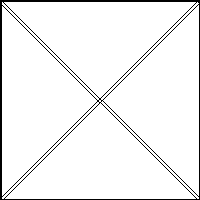Author Guidelines
Author Guidelines
Please carefully check that your manuscript has been prepared in accordance to the step-by-step instructions provided before submitted to our online submission system. This following guide and new manuscript template is updated and prepared specifically for people who is going to contribute or edit the manuscripts that will be published in Journal of Geography and Cartographysince 2023 Volume 6 Issue 2. Manuscripts submitted or in process before 2023 Volume 6 Issue 1 (including 2023 Vol.6 No.1) should be still referred to the previous author guidelines for further processing.
Manuscript Format
Your manuscript should be in MS Word format. All manuscripts must be written in clear, comprehensible English. Both British and American English are accepted. Usage of non-English words should be kept to a minimum. If you have concerns about the level of English in your submission, please ensure that it is proofread before submission by a native English speaker or a scientific editing service.
Types of Submissions Accepted
Journal of Geography and Cartography accepts various types of manuscripts – original research articles, review articles, editorials, reports, letters, brief commentaries, perspectives and methods. Please read further for the definition of each type and select the appropriate option in the submission system. Submissions exceeding the suggested requirements such as "entire manuscript length" will still be processed for consideration and peer review. However, article processing charges will differ in exceptional cases. The article processing charge will then be determined on a case-by-case basis.
Original Research Article: scientific articles on original basis and applied research and/or analysis.
Review Article: a summary highlighting recent developments and current/future trends of the field.
Editorial: solicited concise commentary highlighting prominent topics in the Journal issue. These are the official opinions of the editors of the journal or special issue.
Case Report: it summarizes the execution of a collaborative research program that is directly related to the advancement of geography and cartography.
Letter: letters to the Editor-in-Chief/authorship (please specify) are the comments from reader(s) about individual articles. These letters must be constructive and contribute to the development of individual articles published or the entire journal.
Brief Commentary: unsolicited commentaries or analysis from reader(s) targeting specific published articles in the journal.
Perspective: these are authors' personal opinions on a subject/topic. Unlike Review articles, Perspective articles may cover a more specific, narrow part of the field. However, these are still required to uphold the spirit of academia to be objective as well as aim to initiate or further discuss novel experimental procedures in the field. Therefore, it will undergo peer review and be indexed if accepted.
Method: it presents new or improved versions of experimental methods, tests or procedures pertaining to the field of geography and cartography.
Cover Letter
All submissions should include a cover letter as a separate file. A cover letter should contain a brief explanation of what was previously known, the conceptual advancement with the findings and its significance to broad readership. The cover letter is confidential and will be read only by the editors. It will not be seen by reviewers.
Manuscript Submission Template
Title
FIRST Author1, SECOND Author2, THIRD Author3,*
1 Department, University Name, City, Country
2 Affiliation
3 Affiliation
* Corresponding Author
List of authors
Authors should be listed according to the extent of their contribution, with the major contributor listed first. All corresponding authors should be identified with an asterisk. Affiliations should contain the following core information: department, institution, and country. For contact, email address of at least one corresponding author must be included. Please note that all authors must see and approve the final version of the manuscript before submitting. Please refer to Authorship Policy.
ABSTRACT
Use the word “ABSTRACT” as the title, boldface type, centered relative to the column, fully capitalized. The length of the abstract should be 200 words or less. It should briefly state the purpose, method and results of the paper. All manuscripts must be in English.
Keywords: Please use about 3 to 8 keywords; separated by semi-colon.
1. Introduction
Please follow the steps outlined below when submitting your final draft to the EnPress Publisher.
2. Main title
2.1. Sub-heading
Please capitalize the initial letter of the first word for each level of headings.
2.1.1. Sub-subheading
No more than four levels of displayed headings are employed. Please number the section headings (e.g., 1., 2., 3., 4.; 2.1., 1.2.; 2.1.1, 2.1.2) in boldface.
3. Figures and tables
All figures and tables should be cited in the main text as Figure 1, Table 1, etc. Place figures as close as possible to the text they refer to and aligned center. Photos, graphs, charts or diagram should be labeled Figure (do not abbreviate), and assigned a number consecutively (Figure 1). The title should appear underneath the figure, aligned center, no additional blank line.
In cases where the title needs to be extended over to the second line, the title should be aligned left.
In cases where the tables need to be extended over to the second page, the continuation of the table should be preceded by a caption, e.g., “Table 1. (Continued)”. Table footnotes should be placed below the table.
For example:
Table 1. Table label.


Figure 1. Figure lable.
4. Equations
Including symbols and equations in the text, the variable name and style must be consistent with those in the equations. Equations should be centered and numbered at the right margin of the same line; the equation number is enclosed with open and close parenthesis ().
For example:

(1)
Acknowledgments
The acknowledgments section is not required. This is the section where the authors can credit others for their guidance or help in writing the manuscript.
Conflict of interest
All authors are required to declare all activities that have the potential to be deemed as a source of competing interest in relations to their submitted manuscript. If no conflict of interest, please state that, for example "The authors declare that there is no conflict of interest".
Appendix
Supplementary materials that are excluded in the main body of the paper may be included in the appendices. These include derivations of equations and details of algorithms. Appendices should be used only when advanced technical details are essential to the paper.
References
List and number all bibliographical references that make an important contribution to the paper. The number of in-text citations should be enclosed in square brackets, for example[1].
Journal Article
The format is as follows: numerical order, point, family name, blank, initial letter(s) of names (use et al. if more than three authors), point, Title of the cited article, point, Journal Title in italics, published year, semicolon, volume(issue number), colon, page numbers. doi (if available)
For example:
1. Li Z, Oskarsson M, Heyden A. Detailed 3D human body reconstruction from multi-view images combining voxel super-resolution and learned implicit representation. Applied Intelligence 2022; 52(6): 6739–6759. doi: 10.1007/s10489-021-02783-8
Article in a language other than English
Author 1 FM, Author 2 FM, Author 3 FM, et al. English title of the article (language). Journal Name Year; Volume(Issue) (if available): Firstpage–Lastpage. doi (if available)
For example:
1. Massone L, Borghi S, Palmarpuric localization of dermatitis herpetiformis (French). Annales de Dermatologie et de Vénéréologie 1987; 114(12): 1545–1547.
Book
Book without editors
Author 1 FM, Author 2 FM. Chapter (optional). In: Title of the Book, Edition (if available). Publisher; Year. pp. Page range (optional).
For example:
1. Desiraju GR, Steiner T. The Weak Hydrogen Bond in Structural Chemistry and Biology, 2nd ed. Oxford University Press; 1999. pp. 10–25.
Book with editors
Author 1 FM, Author 2 FM. Title of the contribution. In: Editor 1 FM, Editor 2 FM (editors). Title of the Book, Edition (if available). Publisher; Year. Volume (optional). pp. Page range (optional).
For example:
1. Rojko JL, Hardy WD Jr. Feline leukemia virus and other retroviruses. In: Sherding RG (editor). The Cat: Diseases and Clinical Management, 3rd ed. Churchill Livingstone; 1989. pp. 229–332.
Patent
Patent Owner 1, Patent Owner 2, Patent Owner 3. Title of Patent. Patent Number, Date (Day Month Year, the Application granted date).
For example:
1. Blanco EE, Meade JC, Richards WD. Surgical Stapling System. U.S. Patent 4,969,591. 13 November 1990.
Conference publication
Full citations of published abstracts (proceedings):
Author 1 FM, Author 2 FM, Author 3 FM, et al. Title of presentation. In: Proceedings of the Name of the Conference; Date of Conference (Day Month Year) (if available); Location of Conference (City, Country) (if available). Abstract Number (optional), Pagination (optional).
For example:
1. Chum O, Philbin J, Zisserman A. Near duplicate image detection: Min‐Hash and tf‐idf weighting. In: Proceedings of the 19th British Machine Vision Conference (BMVC 2008); 1–4 September 2008; Leeds, UK. pp. 812–815.
If the proceedings are published as a book with a separate title (i.e., not “Proceedings of the Name of the Conference (full name)” as the title), the Book Title is in italic:
Author 1 FM, Author 2 FM, Author 3 FM. Title of presentation. In: Editor 1 FM, Editor 2 FM (editors) (if available). Title of Collected Work, Proceedings of the Name of the Conference; Date of Conference (Day Month Year) (if available); Location of Conference (City, Country) (if available). Publisher; Year. Abstract Number (optional), Pagination (optional).
For example:
1. Beebe N. Digital forensic research: The good, the bad and the unaddressed. In: Advances in Digital Forensics V, Proceedings of the Fifth IFIP WG 11.9 International Conference on Digital Forensics; 26–28 January 2009; Orlando, FL, USA. Springer; 2009. Volume V. pp. 17–36.
Oral presentations without published material:
Author 1 FM, Author 2 FM, Author 3 FM. Title of presentation (if any). Presented at the Name of Conference; Date of Conference (Day Month Year) (if available); Location of Conference (City, Country) (if available); Paper number (if available).
For example:
1. Zhang Z, Chen H, Zhong J, et al. ZnO nanotip‐based QCM biosensors. Presented at the IEEE International Frequency Control Symposium and Exposition; 4–7 June 2006; Miami, FL, USA.
Thesis/Dissertation
Author FM. Title of Thesis [Level of thesis]. Degree‐Granting University; Year.
For example:
1. Mäckel H. Capturing the Spectra of Silicon Solar Cells [PhD thesis]. The Australian National University; 2004.









 (1)
(1)